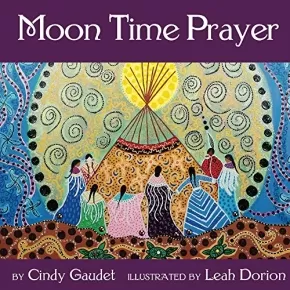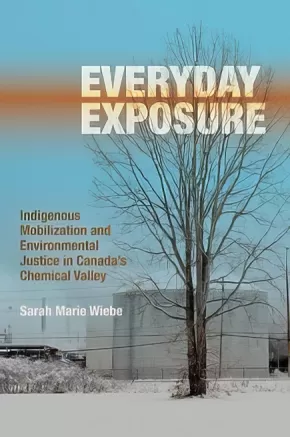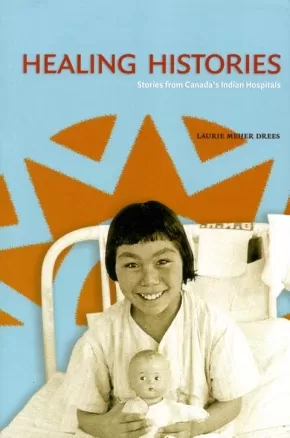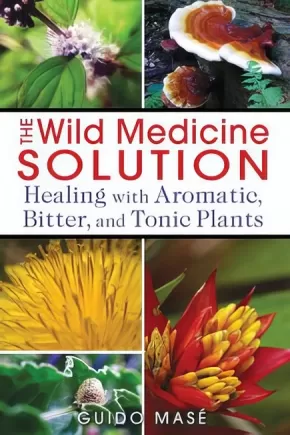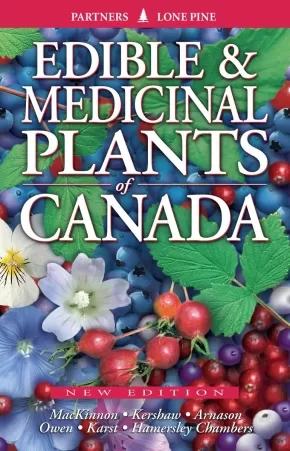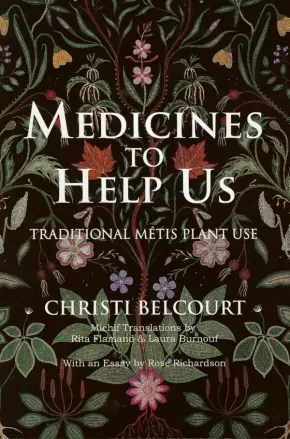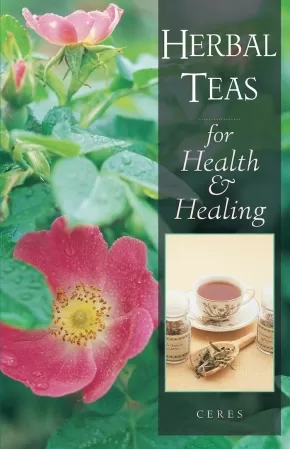
Health
46
-
56
of
56 Results;
Sort By
Go To
of 4
All Our Relations: Finding the Path Forward
$19.95
Format:
Paperback
Text Content Territories:
Indigenous Canadian;
Grade Levels: 12; University/College;
ISBN / Barcode: 9781487005733
Synopsis:
Synopsis:
Every single year in Canada, one-third of all deaths among Indigenous youth are due to suicide. Studies indicate youth between the ages of ten and nineteen, living on reserve, are five to six times more likely to commit suicide than their peers in the rest of the population. Suicide is a new behaviour for First Nations people. There is no record of any suicide epidemics prior to the establishment of the 130 residential schools across Canada.
Bestselling and award-winning author Tanya Talaga argues that the aftershocks of cultural genocide have resulted in a disturbing rise in youth suicides in Indigenous communities in Canada and beyond. She examinees the tragic reality of children feeling so hopeless they want to die, of kids perishing in clusters, forming suicide pacts, or becoming romanced by the notion of dying — a phenomenon that experts call “suicidal ideation.” She also looks at the rising global crisis, as evidenced by the high suicide rates among the Inuit of Greenland and Aboriginal youth in Australia. Finally, she documents suicide prevention strategies in Nunavut, Seabird Island, and Greenland; Facebook’s development of AI software to actively link kids in crisis with mental health providers; and the push by First Nations leadership in Northern Ontario for a new national health strategy that could ultimately lead communities towards healing from the pain of suicide.
Based on her Atkinson Fellowship in Public Policy series, Tanya Talaga’s 2018 Massey Lectures is a powerful call for action and justice for Indigenous communities and youth.
Educator Information
Curriculum Connections: Indigenous Studies, History, Humanities and Social Sciences, Health
Additional Information
320 pages | 5.00" x 8.00"
Among Trees: A Guided Journal for Forest Bathing
$23.95
Format:
Hardcover
ISBN / Barcode: 9781604698893
Synopsis:
Synopsis:
Fully illustrated with gorgeous color photographs of the forest and its inhabitants, Among Trees is a lush guided journal that helps you record and reflect on your therapeutic trips into the woods. Use the blank pages to capture the date, season, weather, and location of specific outings. Creative prompts throughout will help you deepen your experience. Inspirational quotes and sidebars on the benefits of forest bathing pepper the pages for added motivation and depth.
Reviews
"[This journal] can help you add this delightful practice to your life and help you experience greater health on all levels.” —New Spirit Journal
Additional Information
224 Pages | 6" x 8.25"
Moon Time Prayer - 2nd Edition
$20.50
Artists:
Format:
Paperback
ISBN / Barcode: 9781775223146
Synopsis:
Synopsis:
What stories are girls told of womanhood? Are they of strength, grace, and creativity?
Not long ago, they heard whispered tales of impending curses. Physical changes were clinically defined in textbooks, but not spoken of openly. Embarrassment was mandatory. Shame assured. What narratives will inform the women of tomorrow?
Written for young girls and women of all ages, Moon Time Prayer offers an inspiring perspective. Over strawberry leaf tea, we join young Sparrow as her Auntie and Grandmother share the sacred teachings of women's Moon Time. Indigenous wisdom, passed through generations, is offered in this playful, yet powerful, story.
Author, Cindy Gaudet Ph.D., invites readers to engage in a lifelong connection with the power of their natural cycles. Change the narrative and celebrate the first rite of passage with Moon Time Prayer, featuring breathtaking artwork by Leah Dorion, and a 28-day moon journal.
Reviews
“This is such an important book, as it will assist us in reclaiming traditions of the sacred feminine that once were common among our people. Every girl should have a copy!” - Kim Anderson, Cree/Métis author
Educator Information
Recommended for ages 9 to 13.
Additional Information
80 pages | 8.50" x 8.50" | Paperback | Revised, 2nd Edition
Everyday Exposure: Indigenous Mobilization and Environmental Justice in Canada's Chemical Valley
$32.95
Format:
Paperback
Text Content Territories:
Indigenous Canadian; First Nations; Anishinaabeg; Ojibway;
ISBN / Barcode: 9780774832649
Synopsis:
Synopsis:
Surrounded by Canada’s densest concentration of chemical manufacturing plants, members of the Aamjiwnaang First Nation express concern about a declining male birth rate and high incidences of miscarriage, asthma, cancer, and cardiovascular illness. Everyday Exposure uncovers the systemic injustices they face as they fight for environmental justice. Exploring the problems that conflicting levels of jurisdiction pose for the creation of effective policy, analyzing clashes between Indigenous and scientific knowledge, and documenting the experiences of Aamjiwnaang residents as they navigate their toxic environment, this book argues that social and political change requires a transformative “sensing policy” approach, one that takes the voices of Indigenous citizens seriously.
Educator Information
This book would be useful for courses in Environmental Studies, Science, Social Justice, and Social Studies.
Additional Information
280 pages | 6.00" x 9.00"
Healing Histories: Stories from Canada's Indian Hospitals
$32.99
Format:
Paperback
Text Content Territories:
Indigenous Canadian;
ISBN / Barcode: 9780888646507
Synopsis:
Synopsis:
Healing Histories is the first detailed collection of Aboriginal perspectives on the history of tuberculosis in Canada’s indigenous communities and on the federal government’s Indian Health Services. Featuring oral accounts from patients, families, and workers who experienced Canada’s Indian Hospital system, it presents a fresh perspective on health care history that includes the diverse voices and insights of the many people affected by tuberculosis and its treatment in the mid-twentieth century. This intercultural history models new methodologies and ethics for researching and writing about indigenous Canada based on indigenous understandings of “story” and its critical role in Aboriginal historicity, while moving beyond routine colonial interpretations of victimization, oppression, and cultural destruction. Written for both academic and popular reading audiences, Healing Histories is essential reading for those interested in Canadian Aboriginal history, history of medicine and nursing, and oral history.
The Wild Medicine Solution (4 in Stock) - ON SALE!
$20.00 $27.50
Format:
Paperback
ISBN / Barcode: 9781620550847
Synopsis:
Synopsis:
Restoring the use of wild plants in daily life for vibrant physical, mental, and spiritual health
• Explains how 3 classes of wild plants--aromatics, bitters, and tonics--are uniquely adapted to work with our physiology because we coevolved with them
• Provides simple recipes to easily integrate these plants into meals as well as formulas for teas, spirits, and tinctures
• Offers practical examples of plants in each of the 3 classes, from aromatic peppermint to bitter dandelion to tonic chocolate
As people moved into cities and suburbs and embraced modern medicine and industrialized food, they lost their connection to nature, in particular to the plants with which humanity coevolved. These plants are essential components of our physiologies--tangible reminders of cross-kingdom signaling--and key not only to vibrant physical health and prevention of illness but also to soothing and awakening the troubled spirit.
Blending traditional herbal medicine with history, mythology, clinical practice, and recent findings in physiology and biochemistry, herbalist Guido Masé explores the three classes of plants necessary for the healthy functioning of our bodies and minds--aromatics, bitters, and tonics. He explains how bitter plants ignite digestion, balance blood sugar, buffer toxicity, and improve metabolism; how tonic plants normalize the functions of our cells and nourish the immune system; and how aromatic plants relax tense organs, nerves, and muscles and stimulate sluggish systems, whether physical, mental, emotional, or spiritual. He reveals how wild plants regulate our heart variability rate and adjust the way DNA is read by our cells, controlling the self-destructive tendencies that lead to chronic inflammation or cancer.
Offering examples of ancient and modern uses of wild plants in each of the 3 classes--from aromatic peppermint to bitter dandelion to tonic chocolate--Masé provides easy recipes to integrate them into meals as seasonings and as central ingredients in soups, stocks, salads, and grain dishes as well as including formulas for teas, spirits, and tinctures. Providing a framework for safe and effective use as well as new insights to enrich the practice of advanced herbalists, he shows how healing “wild plant deficiency syndrome”--that is, adding wild plants back into our diets--is vital not only to our health but also to our spiritual development.
Edible and Medicinal Plants of Canada
$32.95
Format:
Paperback
Text Content Territories:
Indigenous;
ISBN / Barcode: 9781772130027
Synopsis:
Synopsis:
Canada is home to a vast diversity of plants that have helped nourish and heal our people for thousands of years. Find out about:
* First Nations uses of plant species
* Gathering and preparing wild plants for a variety of uses
* Historic European uses of plant species
* Plants for everything from clothing to shelter
* The fundamentals of survival – food and medicines
* Clear descriptions of the plants and where to find them
* Warnings about plant allergies, poisons and digestive upsets
* A special section identifying poisonous plants and species that are similar
* More than 530 colour photographs and 125 illustrations.
Additional Information
448 pages | 5.50" x 8.50" | Paperback
Medicines to Help Us: Traditional Métis Plant Use
$25.00
Artists:
Text Content Territories:
Indigenous Canadian; Métis;
ISBN / Barcode: 9780920915790B
Synopsis:
Synopsis:
Based on Métis artist Christi Belcourt’s painting “Medicines to Help Us,” this innovative and vibrant resource honours the centuries-old healing traditions of Métis women. With contributions from Métis Elders Rose Richardson and Olive Whitford, as well as key Michif phrases and terminology, Medicines to Help Us is the most accessible resource relating to Métis healing traditions produced to date.
Educator Information
This resource guide does not include the study prints referred to on the back cover and within the book.
Michif Translators: Laura Burnoff and Rita Flamand
Elder Validation: Rose Richardson
Format: Book Only - English, with plant names in Michif, Nehiyawewin (Cree), and Anishinaabemowin (Ojibway)
The Gathering Tree
$19.95
Artists:
Format:
Paperback
Text Content Territories:
Indigenous Canadian; First Nations; Cree (Nehiyawak);
ISBN / Barcode: 9781894778428
Synopsis:
Synopsis:
The Gathering Tree is a beautifully illustrated children's book about HIV/AIDS. Written by award-winning First Nations author Larry Loyie and co-author Constance Brissenden, it is a gentle, positive story of a First Nations family facing HIV.
After 11-year-old Tyler and his younger sister Shay-Lyn learn their favorite cousin Robert has HIV, they discover that knowledge brings understanding and self-awareness. Aspects of physical, spiritual, mental and emotional health are addressed.
Author Larry Loyie was born in Slave Lake, Alberta. He spent his early years living a traditional Cree life and treasures the lessons he learned from the elders. He went to residential school from the age of 10 to 14, then began his working life. Larry returned to school later in life to fulfill his childhood dream of becoming a writer. He received the 2001 Canada Post Literacy Award for Individual Achievement (British Columbia). In 2003, Larry was the first First Nations writer to win the Norma Fleck Award for Canadian Children's Non-Fiction for his first children's book As Long as the Rivers Flow. Co-author Constance Brissenden BA, MA is a freelance writer and editor. She is the author of 14 books of travel and history. In 1993, Constance and Larry formed Living Traditions Writers Group (www.firstnationswriter.com) to encourage First Nations people to write about their traditions and stories.
Illustrator Heather D. Holmlund has roots in the northern town of Fort Frances, Ontario, where she grew up. Her source of artistic vision has always been the spiritual essence of the Canadian landscape and its people. Heather attended York University in the visual arts program, before making her home in Pickering, Ontario. She is the award-winning illustrator of As Long as the Rivers.
The Power to Prevent Suicide: A Guide for Teens Helping Teens (3 in stock) - ON SALE
$16.50 $21.99
Format:
Paperback
ISBN / Barcode: 9781575422060
Synopsis:
Synopsis:
When teens consider suicide, they often tell other teens-if not always directly, then in other ways. Updated with new facts, statistics, and resources, this book gives teens the information and insight they need to recognize the risk and respond appropriately. It spells out the warning signs, guides teens through the steps of reaching out to a friend, and explains when and how to seek help. It also suggests ways for teens to help themselves when they're feeling stressed or depressed.
Herbal Teas for Health & Healing (6 in Stock) - ON SALE!
$11.50 $14.50
Format:
Paperback
ISBN / Barcode: 9780892816460
Synopsis:
Synopsis:
Herbal teas have their own characteristic virtues. Some are slightly stimulating, others are soothing and induce quiet sleep or act as tranquilizers. Many are tonics that can bring an "out-of-gear" system back to complete health. The author describes a wide range of tea-making herbs and gives instructions for their preparation and use.
New edition of the classic best-seller.
Additional Information
96 pages | 5.00" x 7.75"
Sort By
Go To
of 4





